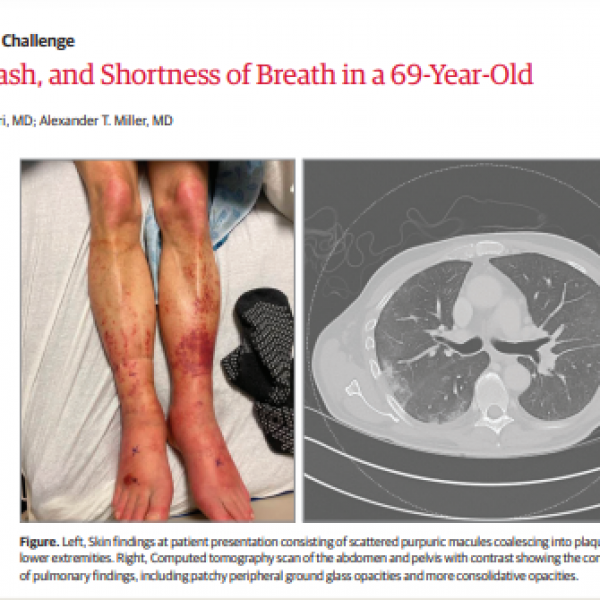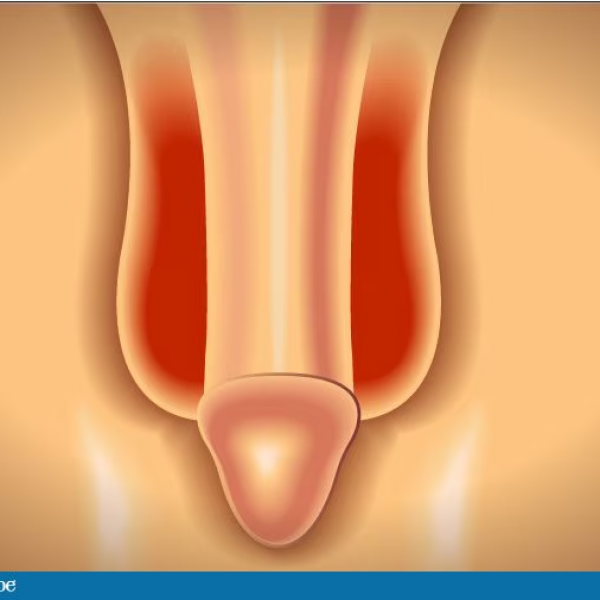Contact Admission
International Collaboration
Viêm da tiết bã, dấu hiệu rối loạn hàng rào biểu mô hệ thống
Seborrheic dermatitis (SD) is a common chronic inflammatory condition, typically characterized by flaking and redness in areas rich in sebaceous glands such as the scalp, face, and chest. However, recent studies suggest that SD may not be merely a localized dermatologic issue, but rather a manifestation of a systemic epithelial barrier dysfunction.
According to the Epithelial Barrier Theory (EBT), impairment of this protective barrier (in the skin, respiratory system, gastrointestinal tract, and eyes) plays a fundamental role in the development of multiple chronic inflammatory diseases, collectively referred to as epithelial barrier disorders (EBDs). A large retrospective cohort study in the United States, conducted on more than 20 million adult patients, provided strong evidence supporting the EBT. The study demonstrated a significant association between seborrheic dermatitis and an increased risk of other epithelial barrier disorders. This finding offers a broader and more comprehensive perspective on the pathogenesis of SD.
Underlying Mechanism: How Does the Epithelial Barrier Work?
The body’s epithelial barrier acts as a “biological shield,” helping to maintain immune balance and preserve tissue integrity. When this barrier is healthy, harmful environmental factors are blocked at the surface, reducing the risk of triggering inflammatory responses.
According to the Epithelial Barrier Theory, when this protective layer is damaged or weakened, epithelial permeability increases. This creates an “open door” for bacteria, allergens, and environmental pollutants to enter the body. Their entry can trigger prolonged inflammatory responses, disrupt immune regulation, and lay the groundwork for various chronic diseases.
Disorders related to the epithelial barrier are not limited to the skin but can also occur in the respiratory and gastrointestinal tracts, as well as the eyes. This indicates that epithelial barrier dysfunction is a systemic issue, and initial skin manifestations may only represent the visible part of a broader health picture.
Study Findings: The Unexpected Connections of Seborrheic Dermatitis
A large-scale cohort study in adults revealed an important finding: seborrheic dermatitis (SD) is significantly associated with epithelial barrier disorders. Individuals with SD are more likely to experience various immune- and barrier-related conditions compared to those without the disease.
Notably, SD often occurs concurrently with other chronic dermatologic conditions. This suggests that SD is not merely a localized skin issue, but may reflect systemic instability of the epithelial barrier throughout the body.
The link between SD and epithelial barrier dysfunction extends beyond the skin. Research data indicate that disruption of the skin barrier may be accompanied by instability of the barrier in other organs.
SD frequently coexists with disorders affecting the gastrointestinal and respiratory systems. Many patients report symptoms such as digestive discomfort, irritable bowel issues, or chronic rhinosinusitis. This implies that when the protective barrier in the skin is compromised, inflammatory responses may spread and impact other sites such as the gut or respiratory tract.
In addition, eye health may also be affected. Numerous cases of SD are associated with dry eyes, ocular irritation, or allergic conjunctival reactions. This indicates that the epithelial barrier system in the eyes may become more sensitive when the skin barrier is impaired.
Interestingly, some respiratory conditions appear less frequently in patients with SD. This suggests that epithelial barrier dysfunction in different organs may involve distinct immune mechanisms, and these differences are still under investigation to gain a deeper understanding.
Clinical Significance
These findings reinforce the role of the Epithelial Barrier Theory in explaining the pathogenesis of seborrheic dermatitis and other chronic inflammatory conditions. SD is no longer regarded merely as a cosmetic issue or a superficial skin problem; it may serve as a warning sign of systemic barrier dysfunction within the body.
Healthcare professionals are increasingly emphasizing a comprehensive approach: rather than focusing solely on treating skin symptoms, it is important to understand and assess epithelial barrier health across multiple organs to develop an optimal and sustainable management strategy.
Take Action Today
Do not focus solely on addressing the visible symptoms on the skin. Seborrheic dermatitis may reflect an underlying imbalance in the body’s epithelial barrier, making a comprehensive understanding of the condition essential.
If you are experiencing persistent or recurrent SD, consult a dermatologist about the possibility of related disorders in other organs, particularly the eyes and gastrointestinal system. Approaching treatment through the lens of the Epithelial Barrier Theory can help achieve more effective disease management and improve overall health.
External skin care is important, but understanding the underlying mechanisms is key to long-term disease control.
Read the original article published in JAMA here.
See the detailed translation and summary by BSNT. Trương Đức Hậu here.
Other Case Report
- Artificial Intelligence in Surgery ( 14:48 - 06/09/2025 )
- Abrocitinib: A New Direction in the Treatment of SAPHO Syndrome ( 14:49 - 20/06/2025 )
- Identifying Collagen Vascular Disease Through Persistent Skin Lesions ( 10:29 - 19/06/2025 )
- MỘT TRƯỜNG HỢP ABSCESS VÙNG HANG VỊ- CĂN BỆNH HIẾM GẶP- ĐƯỢC ĐIỀU TRỊ THÀNH CÔNG TẠI BỆNH VIỆN TÂM TRÍ CAO LÃNH ( 09:34 - 09/05/2025 )
- Phẫu thuật Mitrofanoff: 40 năm nhìn lại. ( 08:35 - 11/04/2025 )
- SỬ DỤNG MẬT ONG HOA TRÀM CHIẾU XẠ TRONG ĐIỀU TRỊ LOÉT TÌ ĐÈ ( 08:21 - 28/03/2025 )
- Chronic Progressive Pink-Yellow Papules and Nodules in a Middle-Aged Man ( 09:02 - 24/09/2024 )


















